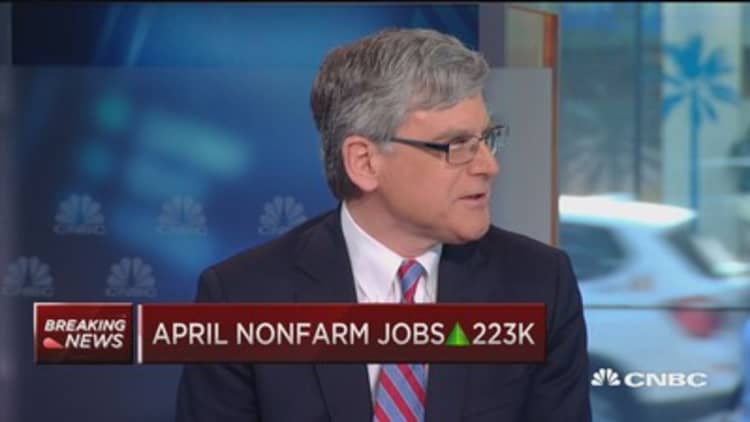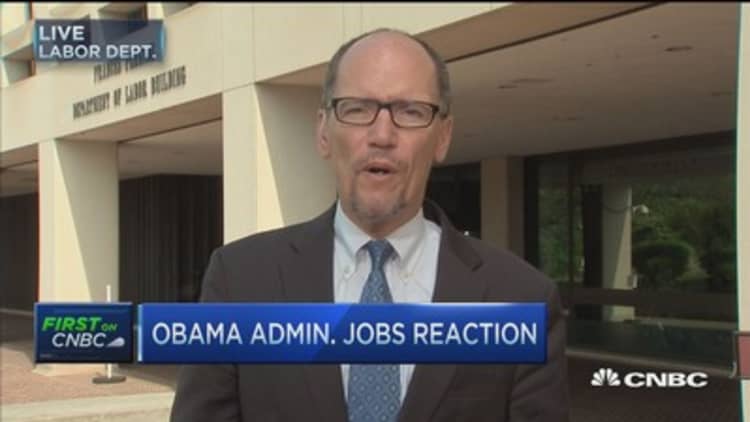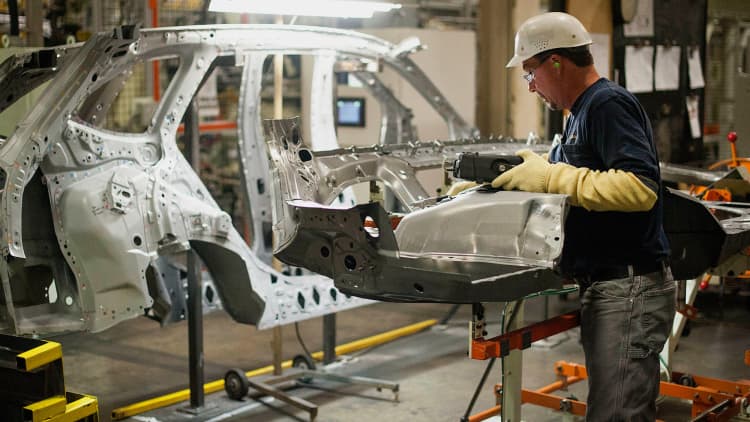



The U.S. economy created 223,000 jobs in April, bouncing back from a sluggish period the first three months of the year, as companies shook off the effects of a surging U.S. dollar and falling profits. The unemployment rate fell to a seven-year low of 5.4 percent, the Labor Department said Friday.
Economists expected nonfarm payrolls to rise 224,000 in April, with the unemployment rate dropping to 5.4 percent from 5.5 percent in March. It was the lowest number since lowest since May 2008.
Investors cheered the renewed strength in the economy, pushing S&P 500 futures higher by about 1 percent. The report was seen as a so-called Goldilocks scenario, showing a rebound, but not strong enough to rush the Federal Reserve to raise interest rates. Government bond yields, which had been rising, fell after the number was released.
The jobs figure vs. expectations was "close enough," said Jeffrey Saut, investment strategist for Raymond James. It's "still consistent with the Fed beginning to raise short-term interest rates later this year."
This jobs report follows a much weaker-than-expected increase for March when the number of jobs created was the lowest since December 2013.
There were conflicting readings of U.S. employment this week leading up the report. On Thursday, weekly jobless claims rose by less than Wall Street expected. However, Wednesday's data from ADP showed 169,000 private sector jobs were added in April, the fewest since January 2014.
Read MoreTrading on jobs report? Fahgettaboudit
The latest GDP reading from the government on the first quarter showed the economy expanded at just a 0.2 percent annual rate on falling exports due to the strong dollar, bad weather crimping consumer spending and dropping oil prices cutting energy sector capital spending.
This report validated the theory that economic dip was just temporary. But there were enough weak factors to keep the Fed at bay.
March nonfarm payroll growth was revised lower to 85,000 jobs, from a 126,000 gain previously reported. Another weak factor in the report was the average workweek, which came in unchanged at 34.5 hours.
Read MoreChart: What's the real unemployment rate?
"While some will say the downward revisions mitigate the positive aspect of an inline reading, we disagree," said Dan Greenhaus, chief strategist for BTIG. "What matters most about this employment report is that the winter slowdown did not bleed through into April."
Wage growth hinted at a rebound in the economy. Average hourly earnings rose 2.2 percent from a year ago, although only by 3 cents to $24.87 from March.
Hiring was up across a broad swath of industries, except for manufacturing and retail. Services added 62,000 jobs, while health care and construction sectors each added 45,000 payrolls.
Private payrolls were largely responsible for the gains, rising by 213,000. The government added 10,000 jobs.


